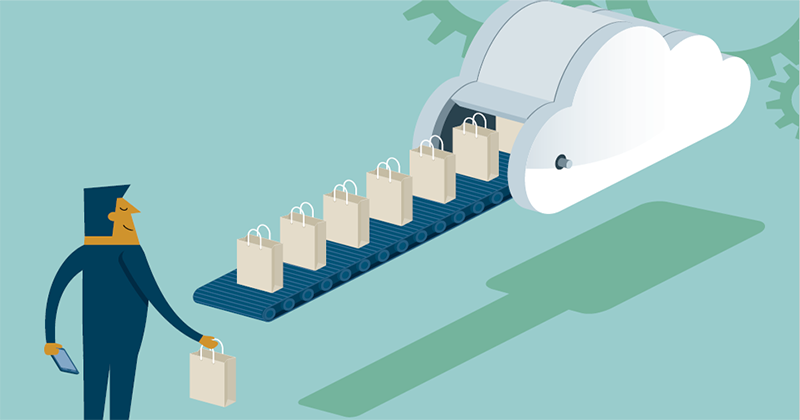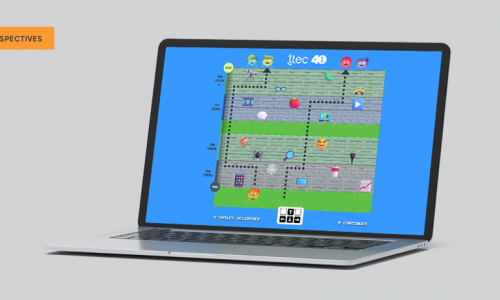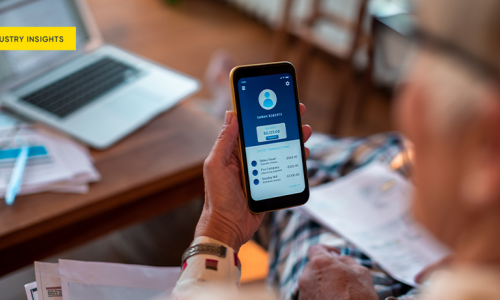Be Direct
What it takes to succeed in the growing direct-to-consumer business model.

Who could have predicted that buying everyday items like razors would become an “experience?” But companies like Dollar Shave Club and Harry’s, which ship razors and bathing supplies directly to people’s doorsteps in nice cardboard packages, are becoming champions of the direct-to-consumer (D2C) revolution and turning traditional retail upside down.
The budding business model skips the distribution and retail middlemen. Manufacturing blends with retail, thanks to savvy e-commerce websites and apps, logistics control, and even customer service management. D2C companies touch almost every part of the customer journey.
D2C is now found all over the business world: Tesla in auto, Blue Apron and HelloFresh in meals, Warby Parker for eyeglasses, and Lyft and Uber in transportation, to name a few. And new startups emerge every day trying to capture consumers’ attention.
The business model can be lucrative. In 2016 Unilever bought Dollar Shave Club for $1 billion, garnering 60 percent of the subscription shave market, says Reuters. Euromonitor predicts the combined company will generate $620 million in razor revenue by 2020.
Brands that previously had limited direct consumer resources are starting to follow in D2C’s footsteps by expanding their digital channels and adopting e-commerce. For example, Gillette, a century-old powerhouse, was disrupted by the channel. According to Euromonitor, its razor market share dropped to 54 percent from 70 percent in 2010. To combat this, the company introduced Gillette on Demand, a web subscription service for customizable blade replacements that includes a sleek cardboard box.
Brands don’t just sell products and services anymore. The focus is shifting to be more about the entire customer experience, something for which consumers are willing to pay more. Simple, memorable, and emotional connections are gaining importance even for simple products.
At a macro level, however, D2C is still nascent. But it has continued to branch out continuously into industries, with both startups and seasoned companies embracing different forms of the model. There is plenty of opportunity for companies to succeed in the D2C market. Here are some examples.
Wine and coffee reimagined
The cardboard box is becoming the simple but elegant symbol of many subscription-based D2C businesses. It represents the seamless online experience that delivers tangible products and services seamlessly and without hassle.
Bean Box, located in Seattle, sprung up with its D2C model three years ago when it was founded by Mathew Berk. The coffee distributor ships coffee from 25 local roasters in Washington in assorted packages directly to consumers based on the user’s preference with either a subscription or gift. Berk sees his customer experience goals as two-fold within the D2C model.
First, its online presence is where the customer can interact with assorted brands and pick from different buying options. Second, it’s the feeling consumers get when they receive the box, he says. Berk says he wants customers to feel an emotion with the packaging, presentation, and the smell of the beans when they crack it open. He wants it to feel like a gift, even when it’s not.
“If you think about it, what a cafe provides is less about access to coffee and is more about local convenience and the fact that they brew it,” says Berk. “And in our model, we don’t brew anything, we ship it to the homes so there is the convenience of having it delivered there and then the brewing is up to the customer. So, it’s a different sort of experience than walking into a cafe.”
Food and drink have proven to be very attractive choices for the D2C model. Sally Srok, president of Inner Compass Consulting, recently helped a winery client switch from wholesale business to the D2C model. She sees three opportunities in the shift of dynamics:
- Increased profitability: Lower overhead by eliminating the need for as many salespeople and physical storefronts.
- Greater creativity: The brand can take new liberties with quality, packing, and quantity produced because it isn’t beholden to specific distributor contracts.
- Relationship rewards: A direct-to-consumer model creates a more intimate relationship with users of the product. Feedback is more immediate, and the bond between customers and the creators is stronger.
Survival of the fittest
One doesn’t have to look far to see the harsh retail reality and potential for the D2C model. According to a 2017 Forbes article, 3,591 retail stores have closed in 2017, including well-known brands such as Payless Shoes, Office Depot, JCPenney, and CVS.
And while behemoths Walmart, Target, and other major traditional retailers had a market value of $297.8 billion in 2016, this was overshadowed by the king of D2C Amazon, which garnered $355.9 billion.
As traditional markets only offer finite reach and personalization that appeal to a mass market communication, D2C is flexing its unlimited operating space and personalized touch. The mega retailers that can afford to do so are trying to make the switch by adapting at least some of their operations to a digital, direct market.
Nike’s D2C business accounts for at least 24 percent of revenue, and it is planning to grow its D2C business by 250 percent in the next five years, according to Fung Global Retail & Technology analysts, who predict the move will generate $16 billion by 2020. In addition, its competitor Adidas is planning to quadruple its e-commerce revenue by 2020, as well.
But what of the other retail markets that are sticking to traditional models? Sears has seen a jarring decrease in market value from $27.8 billion in 2006 to $1.1 billion in 2016, and Macy’s is down to less than half its 2006 value at $11 billion.
Brick and mortar is never going to completely disappear, but it can take steps to integrate itself more with the digital marketplace. For example, many retailers include kiosks in the store that allow customers to order supplies that aren’t readily available, or offer software that pictures customers in the clothes they are buying.
D2C challenges and opportunities
There are still plenty of hurdles and roadblocks for the D2C market. For Berk’s coffee distribution company, there’s an education curve for his potential customers. By focusing on specialty coffee, he is sometimes engaging in an audience that is not as knowledgeable about his products. Fortunately, in an indirect relationship between brick-and-mortar and online companies, Berk notes that its competitor Starbucks is devoting extra time and money to educate consumers on quality coffee. This can better inform coffee consumers on the niche marketplace in which Bean Box is trying to succeed.
Berk’s challenge is found in other D2C environments, which exist online with unique products or services. There has been more elbow grease invested to educate your audience on what exactly is being offered. He also points out the challenge of scaling and shipping fresh beans within 48 hours. A small in-house staff ships 90 percent of its product out of state.
“In the direct-to-consumer space where the product is mostly nonperishable, you can take inventory, hold onto inventory, and have a third-party package,” says Berk. “But for us the beans are roasted locally, they show up, and we do just-in-time manufacturing on all our boxes. As we scale up that’s a solid challenge.”
His staff handles incoming inventory and sorts the beans into customized packages based on customer preference, a process that has been perfected for three years. But despite the challenges of little manpower quickly handling incoming and outgoing products, he sees the personalized care as a rewarding part of the customer experience. He oversees the care of the boxes, compared to handing over inventory and product to a third party that could abuse or neglect the sorting system he founded.
D2C companies must also play many parts in their “core” business. They must build and maintain a successful website, keeping up with the latest design, online marketing strategies, and e-commerce functionality to drive new traffic to their business. At the same time they need to manage fulfillment and customer service to keep customers coming back.
And they need to stay relevant on social media. Facebook offers users a chance to live-stream Q&As, upload photos and videos, and chat in real time with associates. But there’s an art to successful social media strategies across platforms, whether it’s gauging the best time to launch live streams, moderating comments, or keeping messaging consistent.
Despite the difficulties of adapting digitally, many D2C startups are embracing sleek web presences that veer from overly transactional or looking like a catalog. It is becoming appealing as a fun and hip experience for consumers. Even some have deployed chatbots to greet users with a “hey” or other casual lingo, which appeals to the digital-human integration many consumers seek.
What it takes to stand out
Switching to D2C does not immediately give brands an edge. A successful D2C business must create a frictionless, unique, and valuable ecosystem that builds a positive relationship with buyers.
Make it frictionless: Having a digital storefront means that customers are avoiding most of the traditional retail woes such as lines, disgruntled employees, and inconvenient locations. Online carts and the ability to remember a customer’s shipping address and payment info in its knowledge bank can create quick and easy transactions. In return, D2C businesses need to have an online experience that conveniently categorizes products into the sections they belongs in. Or if it a subscription-based experience, have a web presence that deeply describes the product the consumer is looking for, what exactly are the touchpoints their item will go through.
Make it unique: It’s about the experience with D2C. Without the traditional brick-and-mortar footprint and associates as first impressions, a D2C firm must rely on the customer journey with its product as a selling point. Several subscription-based models are built around monthly or trending topics that matter to consumers. Consumers pay for the surprise and anticipation more than for the products themselves.
Deliver value: The concept of Uber seemed puzzling at first, it was a taxi service that had no taxis to operate with. It has now risen to be a global competitor in transportation, because it offered itself on one of the most used platforms available, smartphones. Companies like Uber and Netflix are brands that capitalize on necessities available at consumers’ fingertips. A D2C company needs to prove its value to consumers so they won’t want to switch to another brand.
Jumping wholeheartedly into D2C isn’t practical for everyone. That’s where Amazon comes in. Businesses making the transition to online sales can cut down on distributors and use platforms like Amazon as selling points. It’s a good hybrid model for testing a D2C approach.
The future
The D2C model is becoming more than a “disrupter” across the industries. In the past five years investors have put more than $2.5 billion into its brands. It’s not a fad, and it’s becoming more popular among new companies and traditional brands. How they fare in the long term is up to the experience they can provide consumers.





